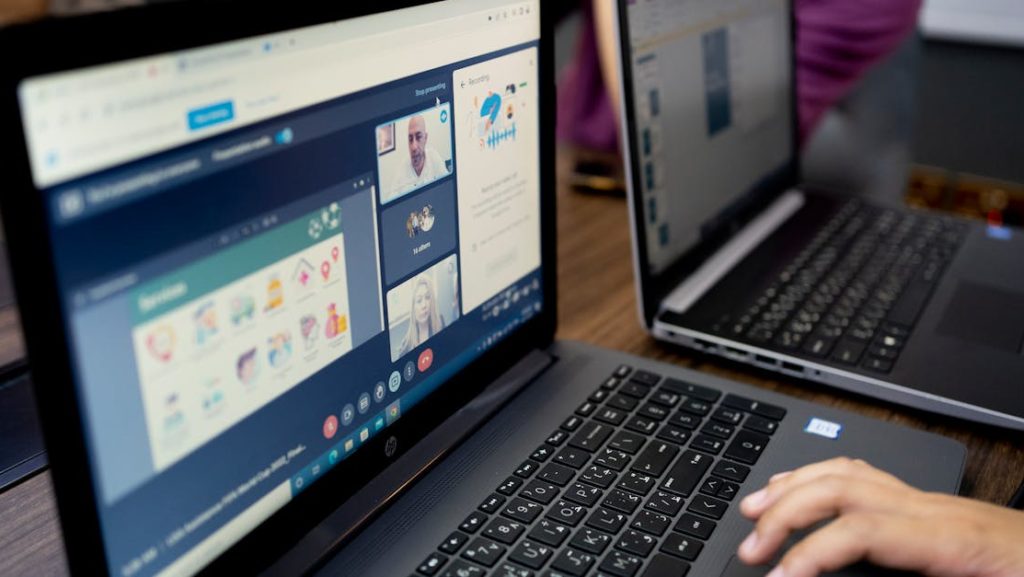
Collaboration is at the heart of successful SaaS teams—especially in remote work environments where time zones, security compliance, and efficiency matter more than ever. The process of demo creation, which is critical for sales, marketing, onboarding, and customer success, can often become a bottleneck when remote teams use tools that are built for a different era. That’s precisely the gap a desktop-first demo builder addresses: it delivers a frictionless, flexible, and secure way for distributed SaaS teams to work together, regardless of where they are in the world.

Why Desktop-First Demo Creation Delivers Real Advantages for Remote SaaS Teams
We have spent years listening to SaaS teams describe how browser-based and cloud-only demo tools introduce inefficiencies:
- Security concerns arise when sensitive pre-release features are uploaded to external clouds just for internal sharing or feedback.
- Browser plugin requirements delay onboarding of new team members, frustrate those with restricted IT environments, and sometimes make tools unusable for a portion of the team.
- Versioning and consistency suffer as teams battle with browser differences, inconsistent plugin versions, or reliance on always-on cloud access.
Let’s break down how a desktop-first tool like DemoGo directly addresses these pain points and transforms collaboration for distributed SaaS teams.
1. Setup in Minutes, No IT Barriers
When every minute counts—onboarding a new marketing manager, responding to a last-minute client request, or prepping a demo for a product launch—the ability to simply download an app for Windows or Mac is liberating. There are no browser plugin prompts, no cloud permissions to request, and no complex IT whitelisting procedures. Team members, regardless of their technical skill or device, are up and running almost instantly. This lets us focus on what matters: building great demos together.
2. True Teamwork Without Version Headaches
With browser-based systems, edits can clash, plugins might fail, or quirky browser updates throw off your workflow. A desktop-first demo app creates a stable, predictable environment. DemoGo projects can be worked on individually, then synchronized across secure drives, storage platforms, or your team’s preferred file-sharing method. The result? No forced single-user editing, no accidental overwrites, and no losing your work to cloud outages. Teams can collaborate asynchronously or in real-time, knowing every change can be traced and rolled back when needed.

3. Secure by Design—No Data Leaves Your Walls
Security and compliance are non-negotiable for most SaaS organizations. A desktop-first approach gives you total control. Demos are created, iterated, and reviewed within your own infrastructure—no need to upload products, sensitive data, or intellectual property to someone else’s servers for feedback loops. For organizations under SOC2, ISO, or regional privacy rules, this is a huge win. Our customers tell us self-hosting is the deciding factor versus tools that require full cloud reliance (For more on this, see our detailed analysis of self-hosting SaaS demo content.)
4. Effortless Customization for Each Audience and Use Case
Sales wants demos customized for verticals. Marketing needs tailored product stories. Success teams must guide users step by step. With DemoGo’s desktop-first interface, we can quickly clone existing demos, adapt flows, edit text, and swap visuals without a single line of code. Every team member can make their changes locally before the master demo is shared for cross-team review or legal signoff. This isn’t just more efficient—the finished demos are more accurate and persuasive for every internal and external audience.
5. Adaptable Sharing—Meet Teams Where They Work
One barrier with cloud-based demo builders is the forced workflow: demos must be viewed in someone else’s web viewer, which puts your audience at the mercy of a third party’s uptime and privacy policies. With DemoGo, we have the flexibility to share projects as files, distribute them through company drives or project management tools, and even self-host the final demo on our own website. This guarantees every reviewer, stakeholder, or client can access demos—as their roles and infrastructure require—without any plugin or cloud-related blockers.
6. Fast Feedback Loops Across Time Zones
Remote work rarely conforms to a single office’s schedule. With desktop demo creation, we enable a “follow-the-sun” workflow: a product manager in Europe scripts a walkthrough, a designer in Asia refines visuals, and a marketing manager in North America customizes messaging and launches the review—all without worrying about browser or account access. This reduces lag and consolidates feedback, keeping momentum high across borders.

7. Unlocking the True Power of Interactive Demos for Remote Teams
What sets DemoGo apart isn’t just technology—it’s our commitment to user empowerment:
- No browser plugins ever needed. All team members embrace a unified experience.
- Codeless editing and real-time updates. Any department—sales, marketing, customer success—can build and edit without IT handholding.
- Unlimited sharing and usage. There’s no cap on how often or widely your team distributes guides and walkthroughs. Rapid iteration is encouraged.
- Built-in workflow analytics. Understand which demos drive engagement and how prospects or colleagues interact at each step.
If you want to dive deeper into how interactive approaches outperform traditional user training, we’ve covered this in our article on interactive SaaS walkthroughs vs. video tutorials.
8. Consistency: Bringing Every Stakeholder onto the Same Page
Consistency in messaging, visuals, and process is essential as SaaS products grow and markets diversify. Desktop-first demo solutions help us lock down a single source of truth for product demos. When teams clone, tweak, and personalize demos from an approved template, we maintain alignment, accelerate review cycles, and ensure every prospect, user, or partner sees the right product story—every time. This, in turn, strengthens our sales funnel and supports continual improvement as new feedback flows in.
9. Lower Support Load, Faster Onboarding
When collaboration is smooth, support teams benefit, too. They’re able to build help tours or onboarding walkthroughs that are easily updated and shared internally without hurdles. As a result, new users have what they need at their fingertips, leading to reduced confusion, self-sufficient onboarding, and fewer repetitive tickets for the support desk.
10. Practical Takeaways: What You’ll Notice with a Desktop-First Demo Builder
- No more waiting for IT or arguing with browser support—anyone can be hands-on within minutes.
- Your content remains your own, fully compliant, and never leaves your infrastructure unless you choose.
- Editing, reviewing, and distributing interactive demos fits seamlessly into existing remote workflows, regardless of device, operating system, or location.
- Collaboration happens at the pace of your team—not the pace of a third-party cloud or vendor’s uptime schedule.
- Demos stay up-to-date and on-brand, boosting user confidence, conversion rates, and internal knowledge.
For more practical tips on keeping demos current, see our advice in techniques for updating walkthroughs with every release.
Conclusion: Building the Future of Remote SaaS Collaboration
As we look to the future, remote and hybrid teams will only become more central to the SaaS landscape. Desktop-first demo creation is uniquely positioned to make this transition not just possible, but powerful. It gives us freedom to create, collaborate, and iterate—without the speed bumps of cloud-only tools or plugin-heavy workflows. It’s secure, compliant, versatile, and intuitive.
If you are ready to streamline cross-functional collaboration and empower every part of your SaaS business with interactive, easily maintained demos, we invite you to try the freemium version of DemoGo: no setup headaches, no plugin drama, just pure collaborative power for modern teams. Get Started with DemoGo (Free)
